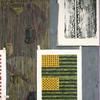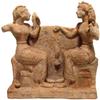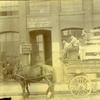John F. Kensett (1816 – 1872), at his finest…
- GENESEO, New York
- /
- July 26, 2021
On September 18th, Cottone Auctions will offer a fresh to the market oil painting by John Frederick Kensett (1816 – 1872) titled, Singing Beach & Eagle Rock, Magnolia, Massachusetts, dated (1868) measuring at 22 by 36 in. and with a pre-auction estimate of $200,000-$400,000. Previously twice exhibited and published in the exhibition catalogue, Privately Owned: An Exhibition of Furniture, Decorative Arts and Paintings on Loan from Private Collectors of the Buffalo Area, The Buffalo Fine Arts Academy - Albright Art Gallery, Buffalo, NY, 1958.
“Your Kensett strikes me as being a very fine one. The arrangement and colors are very clear and forceful—a good sign in Kensett’s work. The silence of these spare Kensett’s is very impressive” said John K. Howat, assistant curator of American paintings & sculpture at the Metropolitan Museum of Art, in a letter to Mrs. Adrian W. Smith on May 25, 1965.
Kensett was an American landscape painter and leader of the second generation of the Hudson River school artists, known for his luminous depictions of tranquil landscapes. For many he represents a kind of artistic epitome in landscape painting.
“Kensett is a person whose work I’ve loved for a very long time. Kensetts differ from the other Hudson River School painters because they are radically simple. And what you have in this painting is this wonderful sense of light; emanating light coming up, particularly from the horizon line. Very few details on it: a couple of birds, a couple boats, not much else. And the water is painted so that it’s frozen forever” said Abstract artist Sean Scully regarding Coast Scene with Figures (Beverly Shore), 1869, a work similar in composition at the Wadsworth Atheneum.
Born in Cheshire, CT, to an English immigrant, he studied drawing at his father’s engraving firm as a teenager. Working as an engraver of bank notes during the 1830s, Kensett began experimenting with landscape painting in his free time, to which he saw immediate success.
Much of his early work was influenced by the careful observation and flickering brushstrokes he admired in the landscapes of Thomas Cole and John Constable. Although Kensett was admired in the 1850's for idyllic landscapes, by the 1860's he had turned to a more mature style and is associated with the phenomenon of “luminism.” It was during this period that he created his most evocative masterpieces.
"Kensett’s new stylistic concerns were intimately tied to his decided preference for a new subject: American coastal scenery. The shores and headlines of New England naturally lent themselves to his heightened preoccupation with light, color, and reflective surfaces. Such scenery also met his compelling desire to reduce compositions to nature's basic components--earth, water, and sky--which in their inherent emotional and philosophical content expressed the artist's convictions concerning nature's tranquil sublimity." John Frederick Kensett: An American Master, p. 99.
Kensett maintained a high profile in the artistic and cultural circles of New York and was respected and well liked by his fellow artists. In 1859 he was appointed a member of the National Art Commission, which was charged with overseeing the decoration of the Capitol in Washington. He was one of the founders of the Metropolitan Museum of Art in 1870 and also served as a member of its board of trustees.
He was a formidable force in the New York art world until his untimely death, and his reputation was further reinforced by the patronage he received from America’s most influential collectors. Today, his works are held in the collections of the Metropolitan Museum of Art in New York, the National Gallery of Art in Washington, D.C., the Museum of Fine Arts in Boston, and the Carnegie Museum of Art in Pittsburgh, among others.
Singing Beach & Eagle Rock, Magnolia, Massachusetts, comes from the collection of Mr. & Mrs. Roy W. Doolittle, Buffalo, New York. The work was originally handled in 1950 by Harry Shaw Newman Gallery (Old Print Shop), New York and changed hands to Jaap A. Vandenbergh, Andover, MA, and was later sold in 1955 by Victor D. Spark, New York to Mrs. Adrian Smith formerly (Lusyd Wright Keating) of Buffalo, NY and bequest to her daughter Cynthia Doolittle in 1971.
The work was previously photoarchived in the Frick Art Reference Library in 1953 and has been referenced in the Mary Bartlett Cowdrey papers in the special collections library, University of Delaware as well as the Victor D. Sparks papers at the Archives of American Art, Smithsonian Institution.
Included with its sale is an original invoice from Victor D. Spark, 1955 as well as letters and correspondence between John K. Howat and Mrs. Adrian W. Smith between 1964-65.
For more information regarding Cottone’s upcoming sale, please visit cottoneauctions.com
Contact:
Matt CottoneCottone Auctions
585-739-1093
matt@cottoneauctions.com


100x100_n.jpg)













